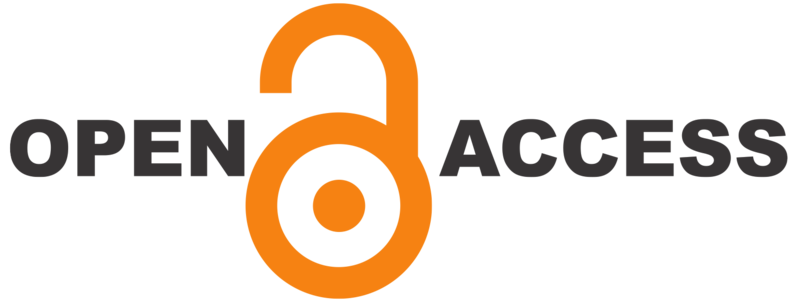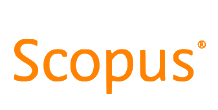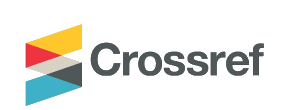Integrating career development learning into the curriculum: Collaboration with the careers service for employability
DOI:
https://doi.org/10.21153/jtlge2019vol10no1art785Keywords:
career development learning, careers services, employability, curriculum, course development, collaborative curriculum development, organisational transformationAbstract
Career development learning has a demonstrable positive impact on the graduate employability of higher education learners. This is particularly the case if it is integrated into the curriculum rather than experienced as an add-on or included in finite curriculum elements. However, integration of career development learning into curriculum is a significant and challenging undertaking in course design, and also in facilitation of learning experiences. Academics manage crowded curricula in their disciplinary areas, and many also have external course accreditation requirements to deal with that may not include career development elements. In many institutions there is mixed understanding of what career development learning entails, no clear top-level strategic support, and unprecedented numbers of enrolled students across digital and on-campus provision. This article explores challenges and opportunities in integrating career development learning into curriculum in higher education, and identifies effective strategies for doing so at institutional, school, and program levels. It draws upon case studies comprising more than 30 interviews across nine universities in Australia and internationally, exploring how cross-disciplinary collaboration between career development practitioners, learning and curriculum designers, and academic units can be effective in enacting curricular career development learning at scale. The article suggests strategies for institutional leaders, academics, and careers practitioners in higher education insitutions at different stages in the curricular career development learning journey.
Metrics
References
Bennett, D., Knight, E. B., Divan, A., Kuchel, L., Horn, J., van Reyk, D., & Burke da Silva, K. (2017). How do research-intensive universities portray employability strategies? A review of their websites. Australian Journal of Career Development, 26(2), 52–61.
Boden, R., & Nedeva, M. (2010). Employing discourse: Universities and graduate "Employability". Journal of Education Policy, 25(1), 37–54.
Bridgstock, R. (2009). The graduate attributes we’ve overlooked: Enhancing graduate employability through career management skills. Higher Education Research & Development, 28(1), 31–44.
Bridgstock, R. (2011). Skills for Creative Industries graduate success. Education & Training, Vol. 53(1), 9-26.
Bridgstock, R., & Hearn, G. (2012). A conceptual model of capability learning for the 21st century knowledge economy. In D. Rooney, G. Hearn, & A. Ninan (Eds.), Handbook on the knowledge economy (pp.105–122). Cheltenham: Edward Elgar.
Casella, D. A. (1990). Career networking—The newest career center paradigm. Journal of Career Planning & Employment, 45(3), 33–39.
Dey, F., & Cruzvergara, C. Y. (2014). Evolution of career services in higher education. New Directions for Student Services, 148, 5–18.
Farenga, S., & Quinlan, K.(2016). Classifying university employability strategies: Three case studies and implications for practice and research, Journal of Education and Work, 29(7), 767–787.
Foundation for Young Australians. (2016). The New Work Smarts: Ensuring young Australians have skills and experience for the jobs of the future, not the past. Retrieved from https://www.fya.org.au/report/the-new-work-smarts/
Fugate, M., Kinicki, A. J., & Ashforth, B. E. (2004). Employability: A psycho-social construct, its dimensions, and applications. Journal of Vocational Behavior, 65(1), 14–38.
Gore, S., Kadish, S., & Aseltine Jr, R. H. (2003). Career centered high school education and post–high school career adaptation. American Journal of Community Psychology, 32(1-2), 77–88.
Hache, L., Redekopp, D., & Jarvis, P. (2000). Blueprint for life/work designs. Retrieved from http://www.blueprint4life.ca
Holmes, L. (2013). Competing perspectives on graduate employability: Possession, position or process? Studies in Higher Education, 38(4), 538–554.
Hooley, T., Marriott, J., & Sampson, J. P. (2011). Fostering college and career readiness: How career development activities in schools impact on graduation rates and students’ life success. Derby: International Centre for Guidance Studies, University of Derby.
Karmel, T., & Carroll, D. (2016). Had the graduate job market been swamped? NILS working paper series No.228/2016. Adelaide: National Institute for Labour Studies.
Kezar, A., & Eckel, P. (2002). Examining the institutional transformation process: The importance of sensemaking, interrelated strategies, and balance. Research in Higher Education, 43(3), 295–328.
MCEECDYA. (2010). Australian Blueprint for Career Development. Ministerial Council for Education, Early Childhood Development and Youth Affairs, Canberra, Australian Capital Territory.
McIlveen, P. (2012). Transformative career development learning: Building capacity for self-determination. In P. A. Danaher, L. De George-Walker, R. Henderson, K. J. Matthews, W. Midgley, K. Noble, M. A. Tyler & C. H. Arden (Eds.), Constructing capacities: Building capabilities through learning and engagement (pp.144–159). Newcastle Upon Tyne, United Kingdom: Cambridge Scholars Publishing,
McKenzie, M., & Howell, J. (2005). A snapshot of Australian university career services. Australian Journal of Career Development, 14(2), 6–14.
Meyer, J., & Land, R. (2006). Overcoming barriers to student understanding: Threshold concepts and troublesome knowledge. Routledge.
NOICC. (2007). National Career Development Guidelines. Washington, DC: National Occupational Information Co-ordinating Committee
Nyström, S., Dahlgren, M., & Dahlgren, L. (2008). A winding road–professional trajectories from higher education to working life: A case study of political science and psychology graduates. Studies in Continuing Education, 30(3), 215–229.
O’Leary, S. (2017). Graduates’ experiences of, and attitudes towards, the inclusion of employability-related support in undergraduate degree programmes; trends and variations by subject discipline and gender. Journal of Education and Work, 30(1), 84–105.
Patton, W., & McMahon, M. (2014). Career development and systems theory: Connecting theory and practice. (3rd ed). Rotterdam: Sense Publishers
Silverberg, M., Warner, E., Fong, M., & Goodwin, D. (2004). National Assessment of Vocational Education. Final Report to Congress. Washington, DC: US Department of Education
Tomlinson, M. (2017). Forms of graduate capital and their relationship to graduate employability. Education+Training, 59(4), 338–352.
Watts, A.G. (1977). Careers education in higher education: principles and practice. British Journal of Guidance and Counselling, 5(2), 167–184
Watts, A. G. (2006). Career development learning and employability. London: Higher Education Academy.
Watts, A. G., & Fretwell, D. H. (2004). Public policies for career development. Case studies and emerging issues for designing career information and guidance systems in developing and transition economies. Washington DC: World Bank Education Advisory Service.
Yorke, M. (2010). Employability: Aligning the message, the medium and academic values. Journal of Teaching and Learning for Graduate Employability, 1(1), 2-12.











